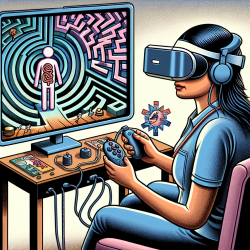As practitioners dedicated to improving the outcomes for children, we must continually seek evidence-based strategies that can enhance their health and learning experiences. One such innovative approach is the introduction of standing desks in classrooms, as explored in the research study "Standing Desks in a Grade 4 Classroom over the Full School Year" published in the International Journal of Environmental Research and Public Health.
This study followed a group of Grade 4 students over an entire school year, assessing the impact of standing desks on their physical activity levels, sitting and standing behavior, and musculoskeletal discomfort. The findings offer compelling insights that can inform our practices and encourage further research.
Key Findings
- Increased Standing Time: Students using standing desks showed a significant increase in standing time, ranging from 17 to 26 minutes per school day.
- Reduced Sitting Time: Correspondingly, sitting time decreased by 17 to 40 minutes per school day when using standing desks.
- Musculoskeletal Discomfort: Students reported less discomfort in the neck and shoulders when using standing desks, and this reduction was consistent throughout the school year.
- Physical Activity: There was no significant change in overall physical activity levels during waking hours, suggesting that standing desks did not lead to fatigue or compensatory reduction in out-of-school activity.
Implications for Practitioners
For practitioners working in schools, these findings highlight the potential benefits of integrating standing desks into classroom environments. Here are some practical steps to consider:
- Advocate for Standing Desks: Use the data from this study to advocate for the introduction of standing desks in your school or district. Highlight the health benefits and potential for improved focus and engagement.
- Monitor and Evaluate: Implement a monitoring system to track the impact of standing desks on students' physical activity and comfort levels. This will provide valuable data to support continued use and refinement of this intervention.
- Encourage Movement: Incorporate additional strategies to encourage movement throughout the day, such as regular breaks for stretching and physical activities.
Encouraging Further Research
While the study provides promising results, it also underscores the need for further research. Larger-scale studies involving diverse populations and longer follow-up periods are necessary to fully understand the long-term benefits and potential challenges of standing desks in classrooms.
As practitioners, we can contribute to this growing body of research by documenting and sharing our observations and outcomes. Collaborating with researchers and participating in studies can help build a robust evidence base to support the widespread adoption of standing desks and other innovative interventions.
To read the original research paper, please follow this link: Standing Desks in a Grade 4 Classroom over the Full School Year.










